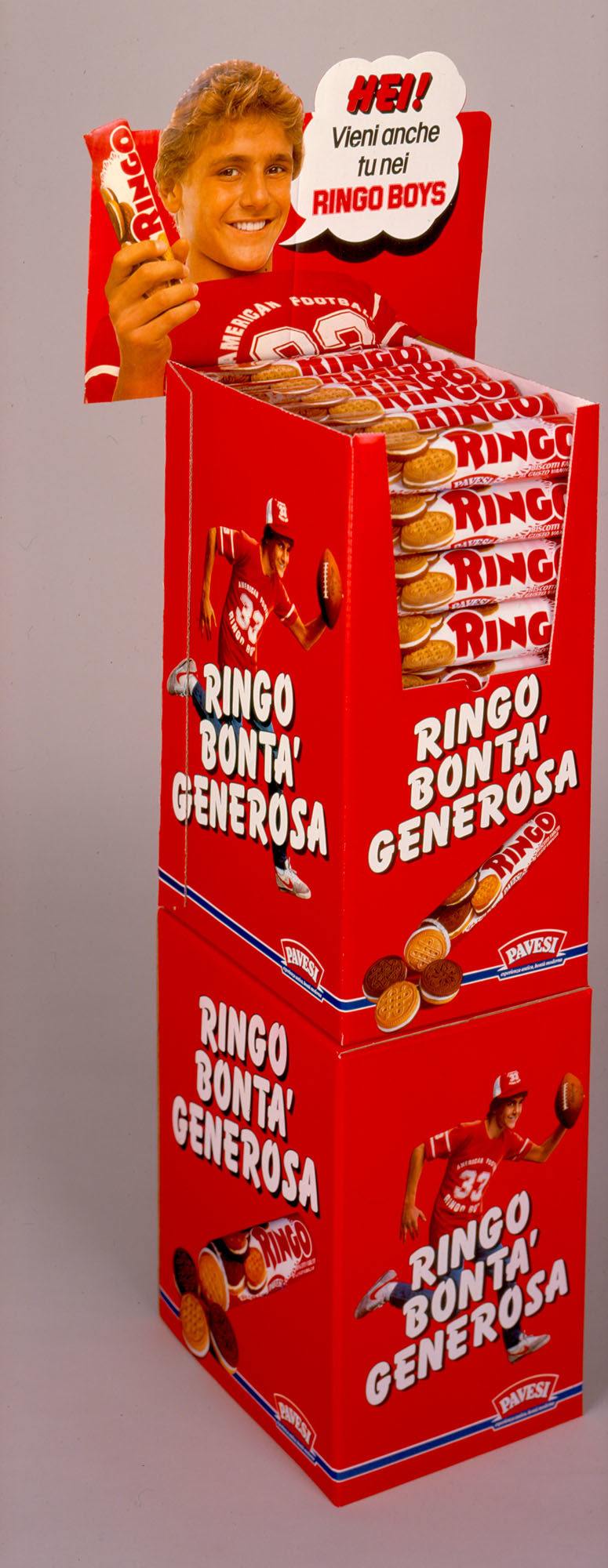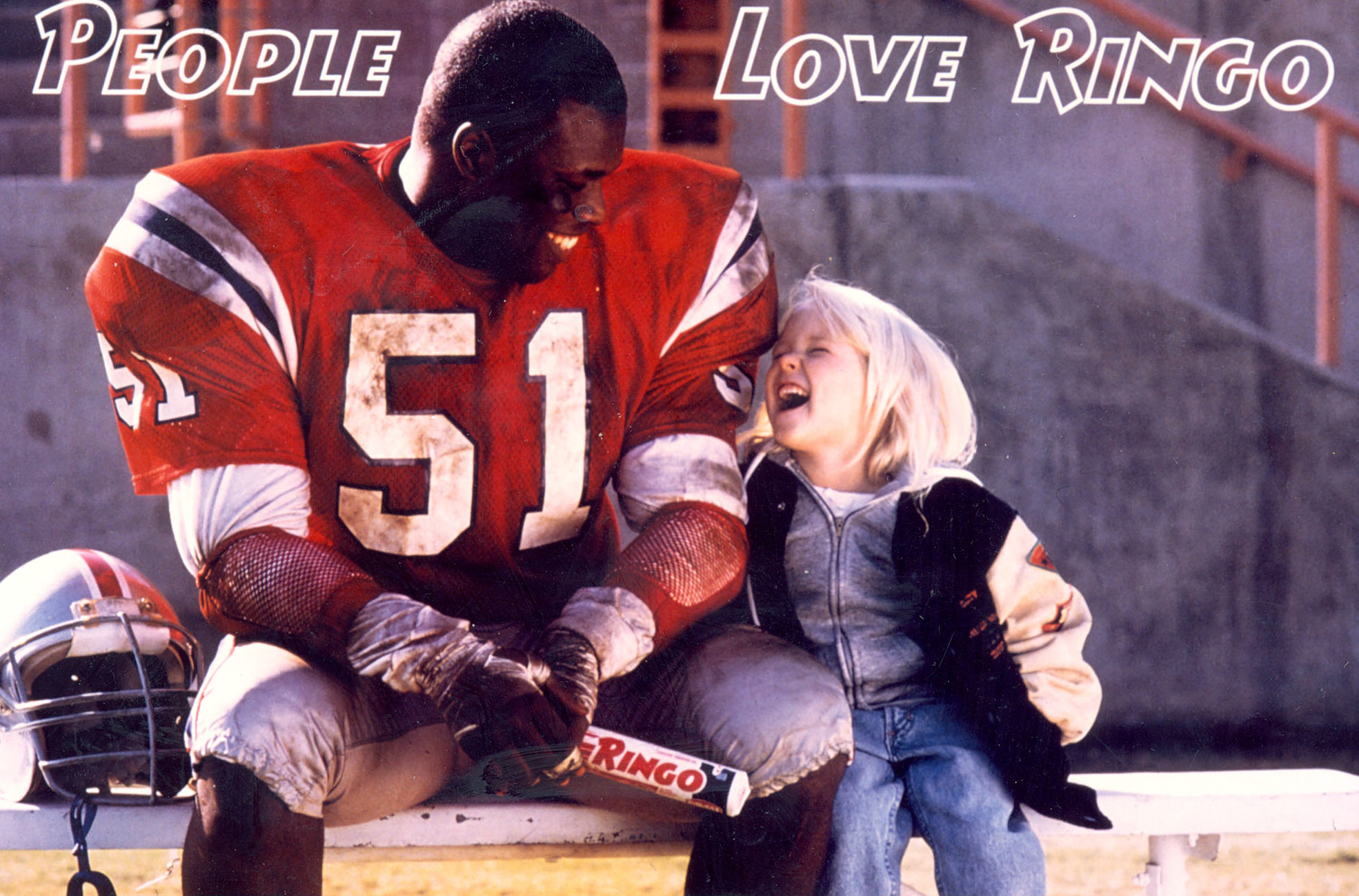History of a brand and of its products, between the idea of active lifestyle and innovation
Roberto Pagliari
The Pavesi brand has not only represented a reference point in its specific sector for many years, but it has contributed to the evolution of the nutritional habits of the Italians. The Pavesini cookies, the Gran Pavesi Crackers, Ringo cookies, the Autogrill restoration points along the highways (the latter now owned by a society external to the group) have entered into the imaginary collective with their charge of innovative energy. The undisputed author of all of these extraordinary achievements was the founder Mario Pavesi (1909 – 1990). Born in Cilavegna, a small town in the province of Pavia twenty kilometres away from Novara, Pavesi demonstrated from the very start a strong spirit of initiative alongside with an innate talent for sales. In 1937 he opened a bakery in Novara with three workers, where he patented and produced the Little Cookies of Novara, that were the predecessors of the more famous Pavesini, and that were based on a product of local tradition, but were smaller and contained less humidity.
Decidedly oriented to innovation and differentiation of his products from those of the competitors, Pavesi felt the incessant impulse – these are his words – to “do things from the very start, otherwise you risk that others will do them before you”. His great curiosity for novelty, for social changes, for the taste and habits of people, associated to great vitality and enthusiasm, allowed him to gain intuition in advance about the trends and needs of the market, so tracing the lines of its future development. He had a very clear intuition about the enormous potential of advertising as a factor that would speed up the company’s development. The recourse to creative minds of the calibre of Gino Boccasile (1901 – 1952), Gian Rossetti (1920-1994), Armando Testa (1917-1992), Erberto Carboni (1899 -1984), made it possible to create advertising campaigns of great effectiveness, characterized by a communicative style that was unmistakable and was also applied to television by talents like Luciano Emmer (1918-2009), Maria Perego (1923-), Marco Biassoni (1930-2002).
It is undeniable that the advertising campaigns – today merged and kept at the Barilla Historical Archives – many times went well over the boundaries of simple commercial communication to become reference points for the daily habits of our nation. Pavesi chose to concentrate the publicity solely on those products that were created outside of the definition of generic common goods of the large part of market proposals, and focused on “novelties”.
It was said that each one of the Pavesi products is an “only child”, and this description is valid for the communication campaigns as well. The Pavesini found their ideal partner in Topo Gigio; the Gran Pavesi crackers have been accompanied by extraordinary characters like King Arthur and Sir Lancelot.
Each one an “only child” born from genial intuitions, the Pavesi products expressed themselves coherently in advertisement strategies capable of interpreting the organoleptic contents and to make them come alive in the most congenial of consumer’s environment to them. Pavesi did not follow an “umbrella policy” for the brand, but focused on products that often had the greatest appeal, were innovative and unique, and did not have any need for a frame to connect all of them to one brand. In this logic, in 1967 Ringo and later in 1970 Togo were created. The latter is a cookie shaped like a little stick and covered in chocolate, whose name is short and easy to remember and reminds one of Africa, a continent rich with cocoa plantations, and also of the dialect of Piedmont in which the word “togo” has the meaning of “amazing”. Togo is a delightful and taste fulfilling cookie, it is fun and was destined to young people who love to be in a company.
The choice of the target of specialty products was maintained until Mario Pavesi gave up the control of the society to Montedison in 1972, the year from which the image of Pavesi started to loose its incisiveness. The new ownership formed the Alimont society, in which all of the food sector’s activities were concentrated. In 1974, following the cession of the control share packet to SME, the name of the society was changed to Alivar. Under this new management, the “Friends of the Morning” range of products was launched, and this choice marked an inversion of tendency with respect to the logic of unique products. Starting from 1990, with the acquisition of the company on the part of Barilla, Pavesi fine tuned a new strategy which took into account a landscape with few competitors, but of great substance (Mulino Bianco, Saiwa, Ferrero).
The Gran Pavesi crackers, Pavesini and Ringo cookies want to transmit the idea of goodness and lightness. The common denominator of all of these values on the level of communication is identified with the idea of vitality. This guiding principle is declined in a coherent way with the entire range of products, placing an accent from time to time on energy, lightness, tastefulness. The choice of a testimonial who is the same for all products and is used with the greatest flexibility and is able to express the image coherence of Pavesi followed the same guidelines, pointing on a sport’s personality able to incarnate the idea of vitality, and is young, popular and with a recognized charismatic personality and a nice family. Antonio Cabrini was selected, and he was not employed in his soccer uniform, but always featured as a common person surrounded by a real family: a “famous common person”, able to express normal scenes of lively daily life. This was a concept of vitality that is still today at the base of the advertising communication, though in different forms.
The Pavesi brand has represented our “recent memory” since it has deep roots in the most optimistic layer of the Italian modernization process, and it is almost a symbol of a society that leaves behind not only the sufferings of war, but also the burden of farm work. A material, joyful and optimistic concept of pleasure materializes, confiding in the prodigious abundance of means and in the satisfaction of desires. The Pavesi products seem like “toy products”, capable of catching the exuberant and playful spirit of the economic miracle with entertaining shapes and humorous and unique names. Among the various products that made the history of the brand, three names stand out for a precise and well rooted identity of consolidated notoriety: Pavesini, Gran Pavesi, and Ringo. We chose to concentrate our attention on these products in the conviction that they can reveal the strength and versatility of the Pavesi Brand.
PAVESINI
Pavesini cookies seem to represent the fuel of the Italian acceleration. Born in 1948 as local specialties with the name of Biscottini (little cookies) of Novara, after only four years they became best known as Pavesini. Mario Pavesi had an intuition that this product could become a national specialty. It was sold in a packaging and at a price which was easy to memorize (100 Lire), in a market in which cookies where mostly sold loose. The advertising communication of Pavesini can be summarized in two well defined historical phases.
The first one went from the launch of the product to 1957, and saw children as the target of a product the lived in the area of diet and health foods and was characterized by a quality control policy that was extremely strict. While the reference target was obviously the mothers, the user’s target varied from the age of weaning to solid foods to adolescence, with a specific identification in the age of toddlers.
The second phase, which began in 1958, was a turning point and stands out for importance because the attitude of society towards nutrition witnessed a change. These were not times of economic hardship anymore, and food was not seen as a “qualitative fuel” of working people anymore. The Pavesini, strong in their positioning among diet and health foods, were proposed to a very wide public of active people of any age, who embraced the typical model of modern life. The advertising communication that was edited by Erberto Carboni in those years was likewise coherent with the new social climate. And indeed it is with the clock, symbol used in 1959, where an array of Pavesini takes the place of the numbers for the hours, that the propulsive soul of the products ignites.
The hands of the clock turning fast testify to the acceleration of time in the first era of modernization. Light, vertical, not at all regressive in form and content, with the slogan “It’s always time for Pavesini” they enter in circle in that common language that thanks to television is overcoming the regional barriers to become unified and homogenized also in advertisement slogans. In 1963 the relationship between Pavesini and Topo Gigio, the famous puppet that was born from the imagination of Maria Perego, and that would became acclaimed beyond the fame of the Carosello show in the imaginary collective of the Italians.
The success of this couple was incredible, so much that in 1966 a promotional prize game based on the collection of figurines with Topo Gigio became an unstoppable success. The main character of ten years of television communication, Topo Gigio revealed to be a multi-talented figure, and interpreted various roles in which he regularly created frustration in his partners in the scenes, with his sly “histrionic” behaviour. The Pavesini are proposed more and more as cookies for the new rhythm of life of the Italians who face an unforeseen social and geographical mobility. With slogans like “Keep yourself upbeat with Pavesini” and with advertising posters of Italy’s Boot covered up with Pavesini, the advertising communication continues in a crescendo of exuberance, that seems to relent a little only in the period of the “Anni di Piombo” (the years of lead), in which a more rational and fact base attitude is chosen.
The theme of vitality is reprised after 1978, when the Pavesini return in a passionate way with the image of two people running, a man and a woman, shown in slow motion, and accompanied by the slogan “He who loves burns”. This theme, on television and in printed advertisement, was in line with the feelings of the new generations and remained until 1984, guaranteeing an extremely strong permanence of this product in the memory of consumers. In the 1990s the concept of “energy” evolved while meeting the ever changing taste of consumers, who by now were oriented towards light nutrition. The absence of added fat makes Pavesini a symbol of lightness, coherently underlined for over forty years of life.
This continuity led the brand to a reprise in 1995 of the slogan that had already been used successfully in the 1950s, “It’s always time for Pavesini” in humorous and playful tones. This idea of lightness was underlined by reprising the same clock ideated by Erberto Carboni thirty years earlier.
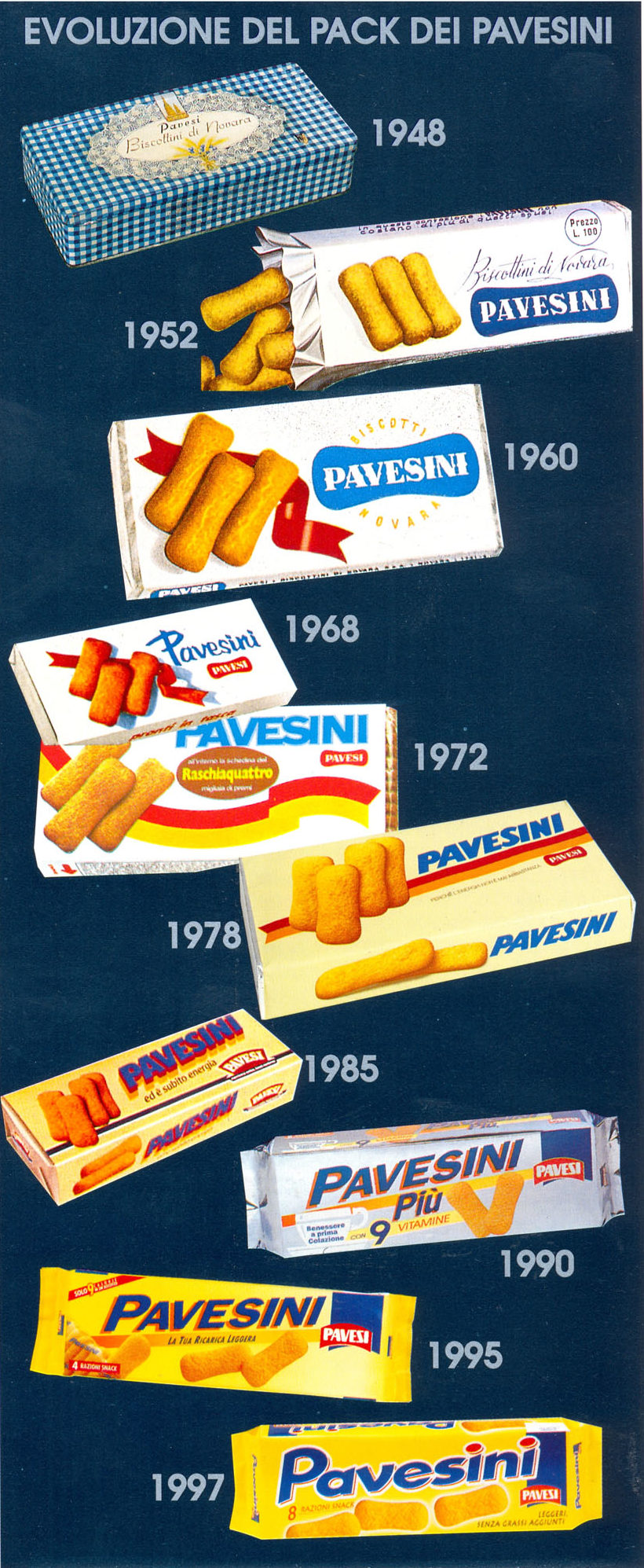
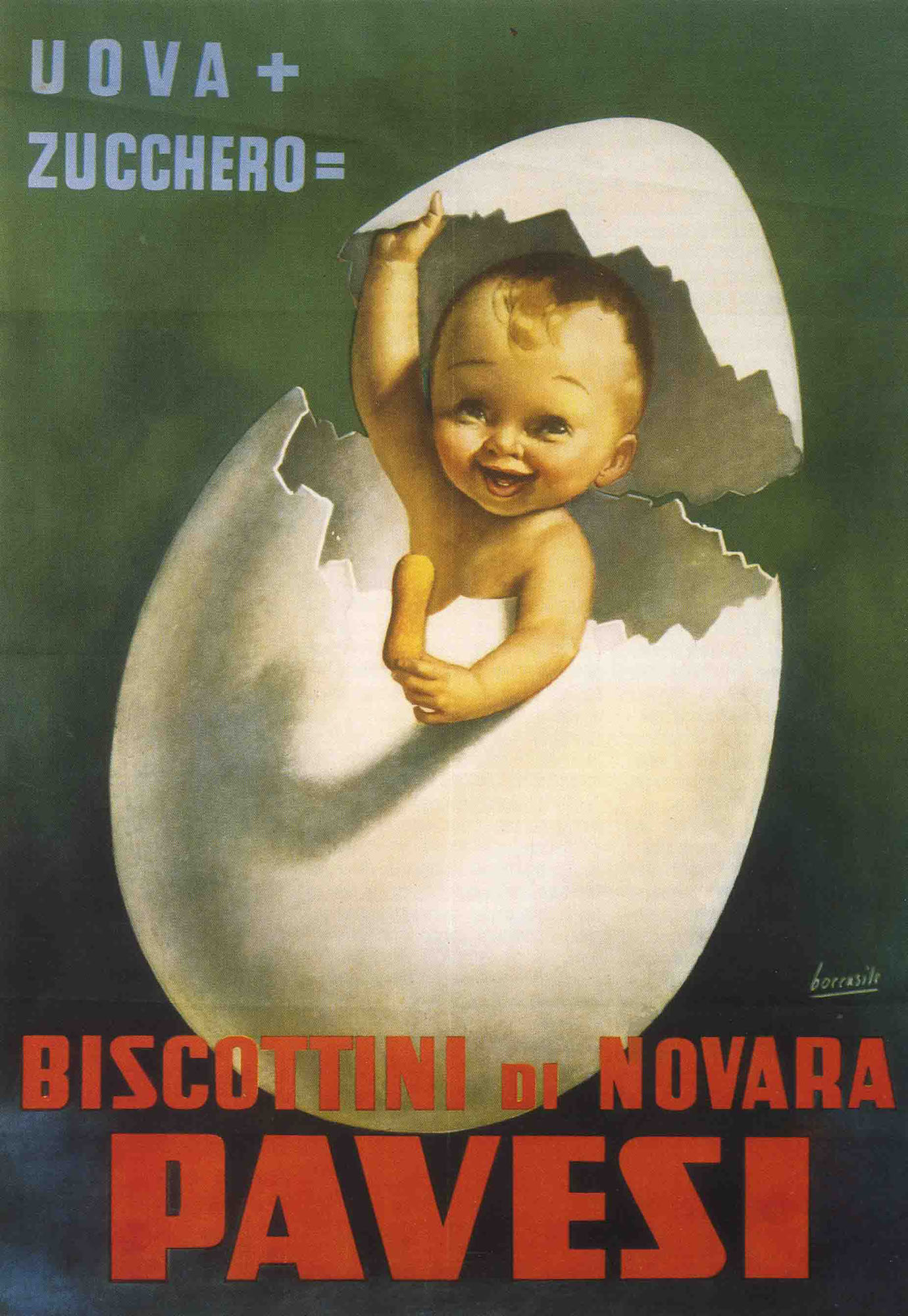

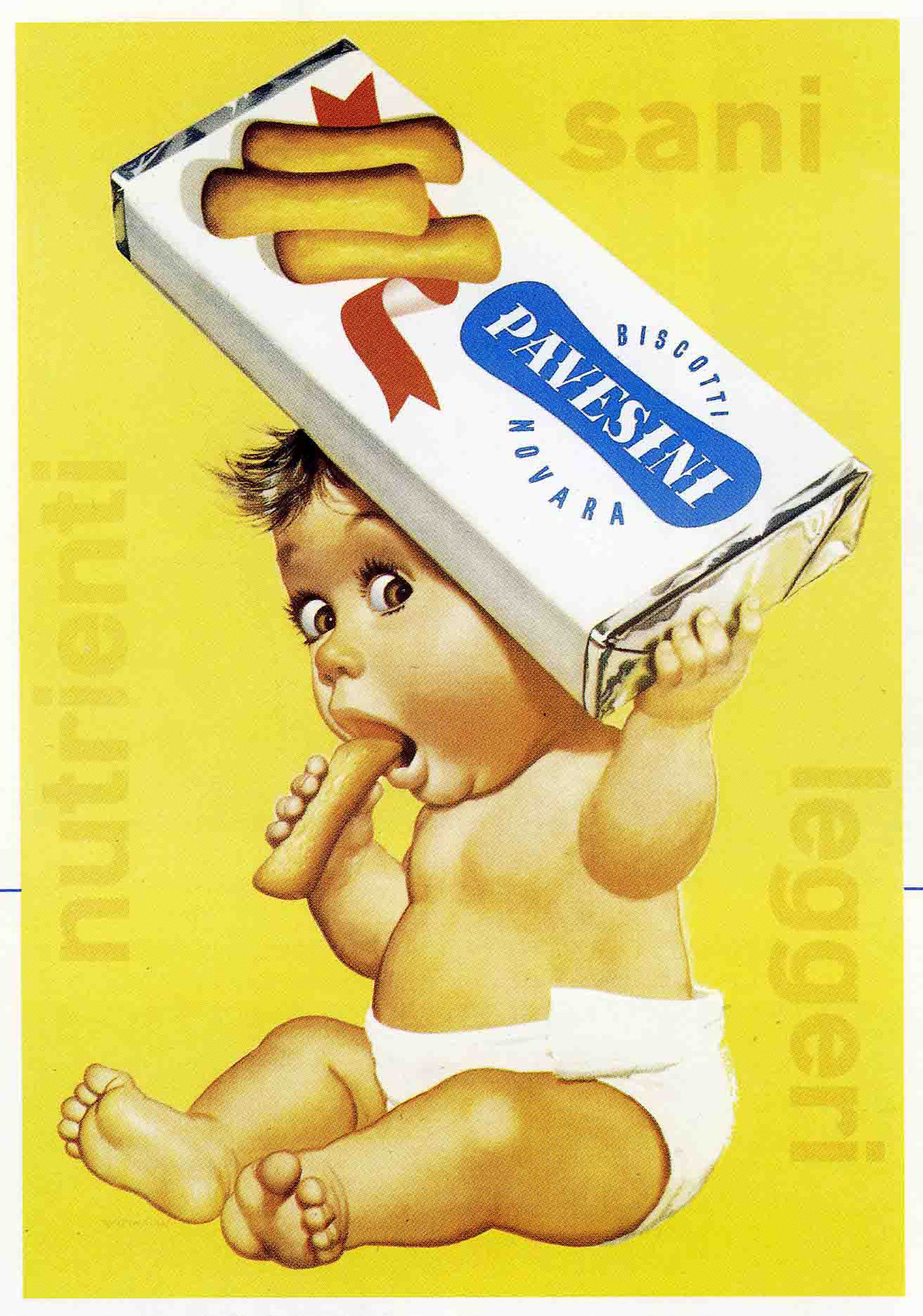
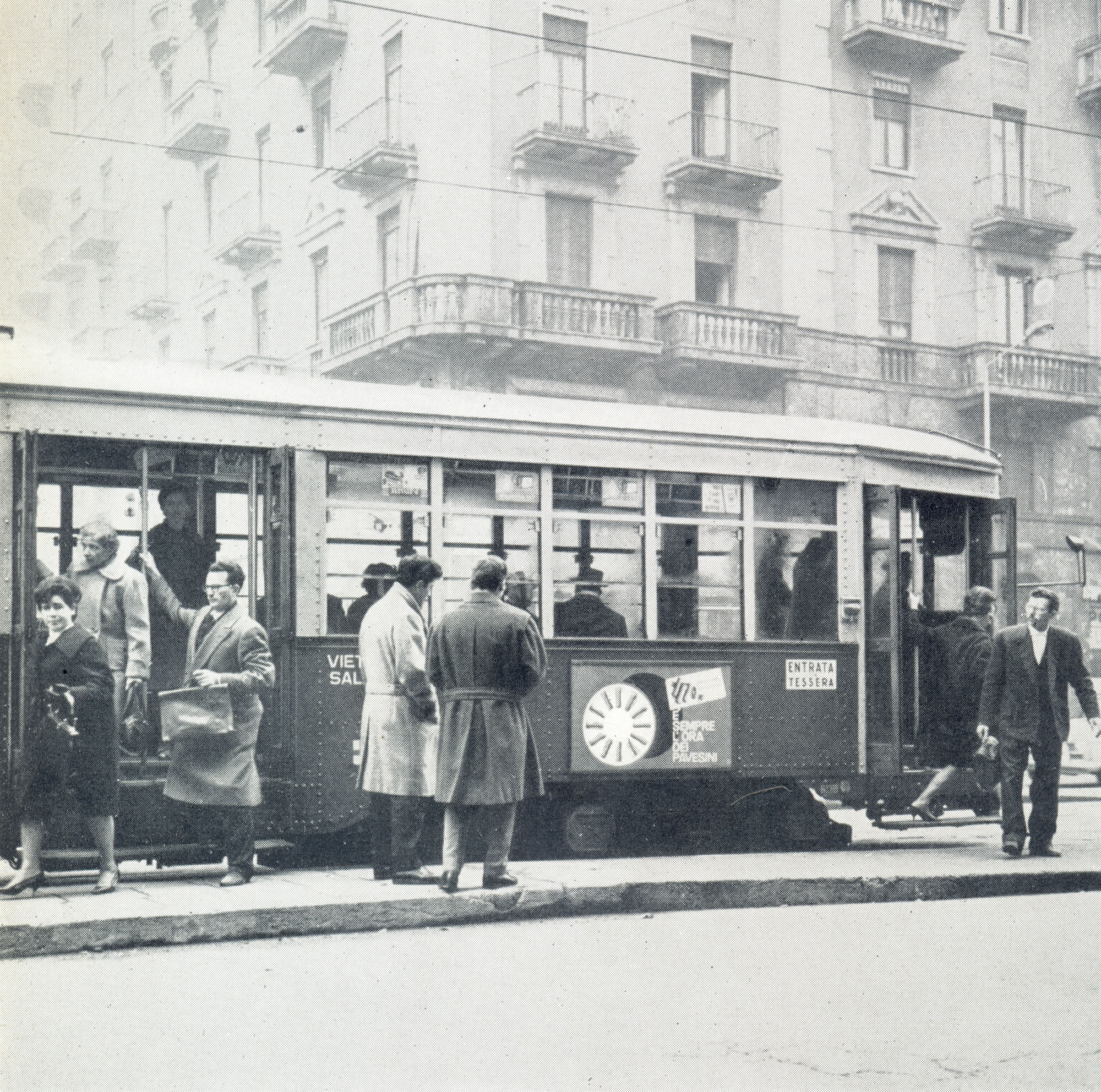
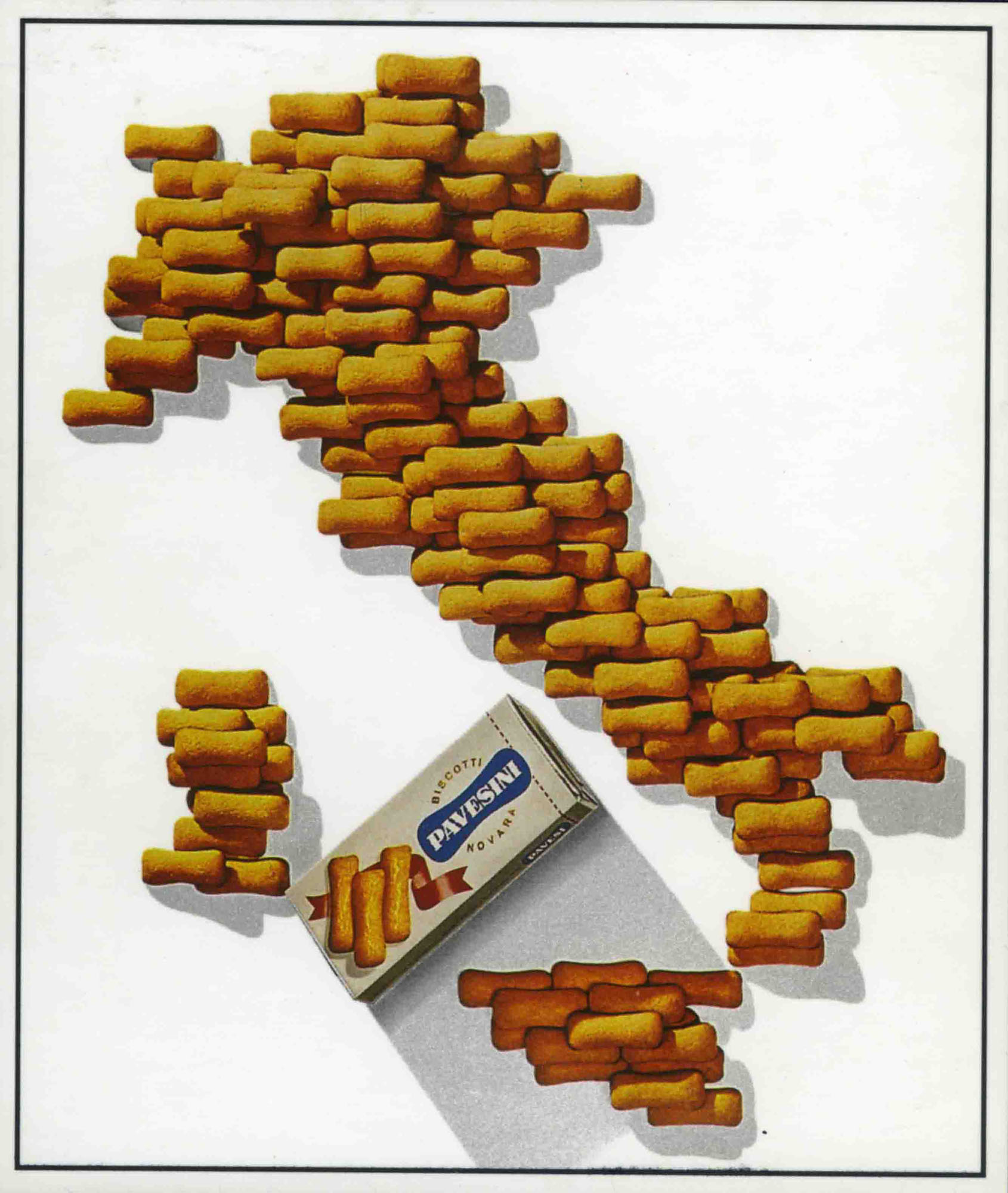
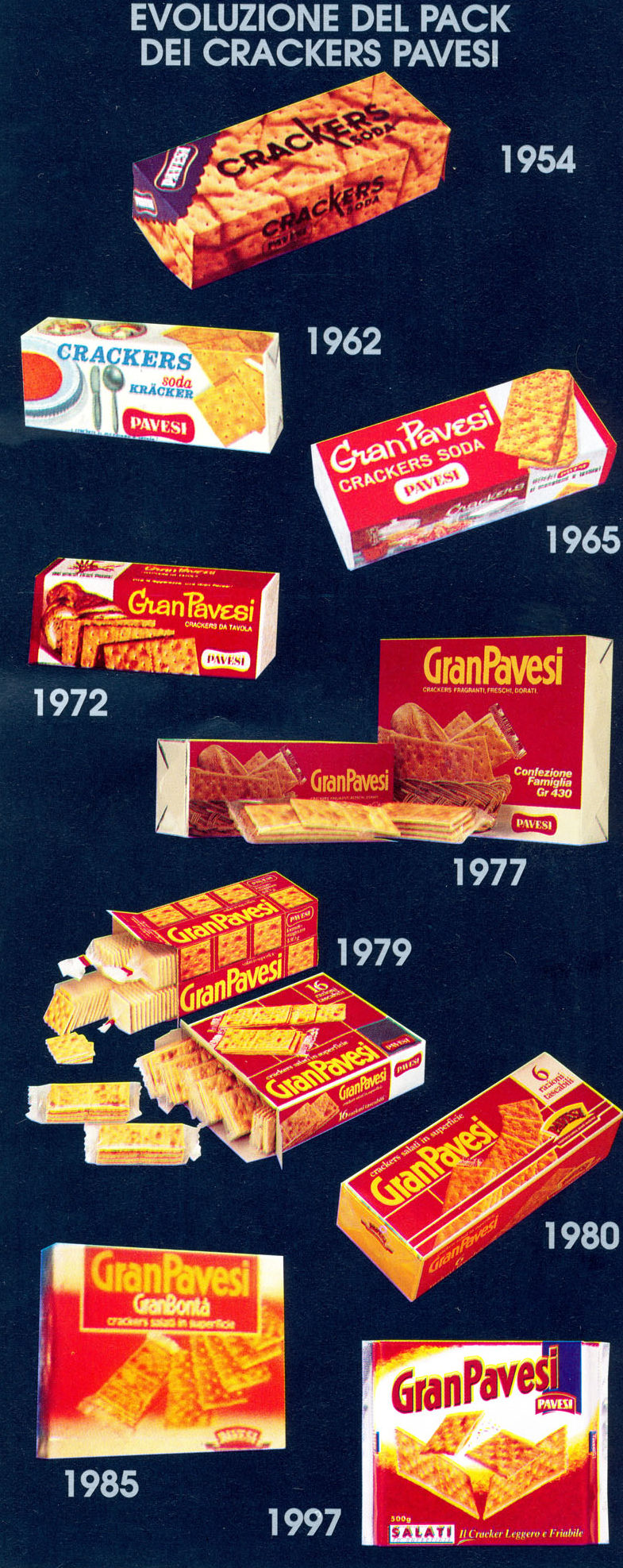



















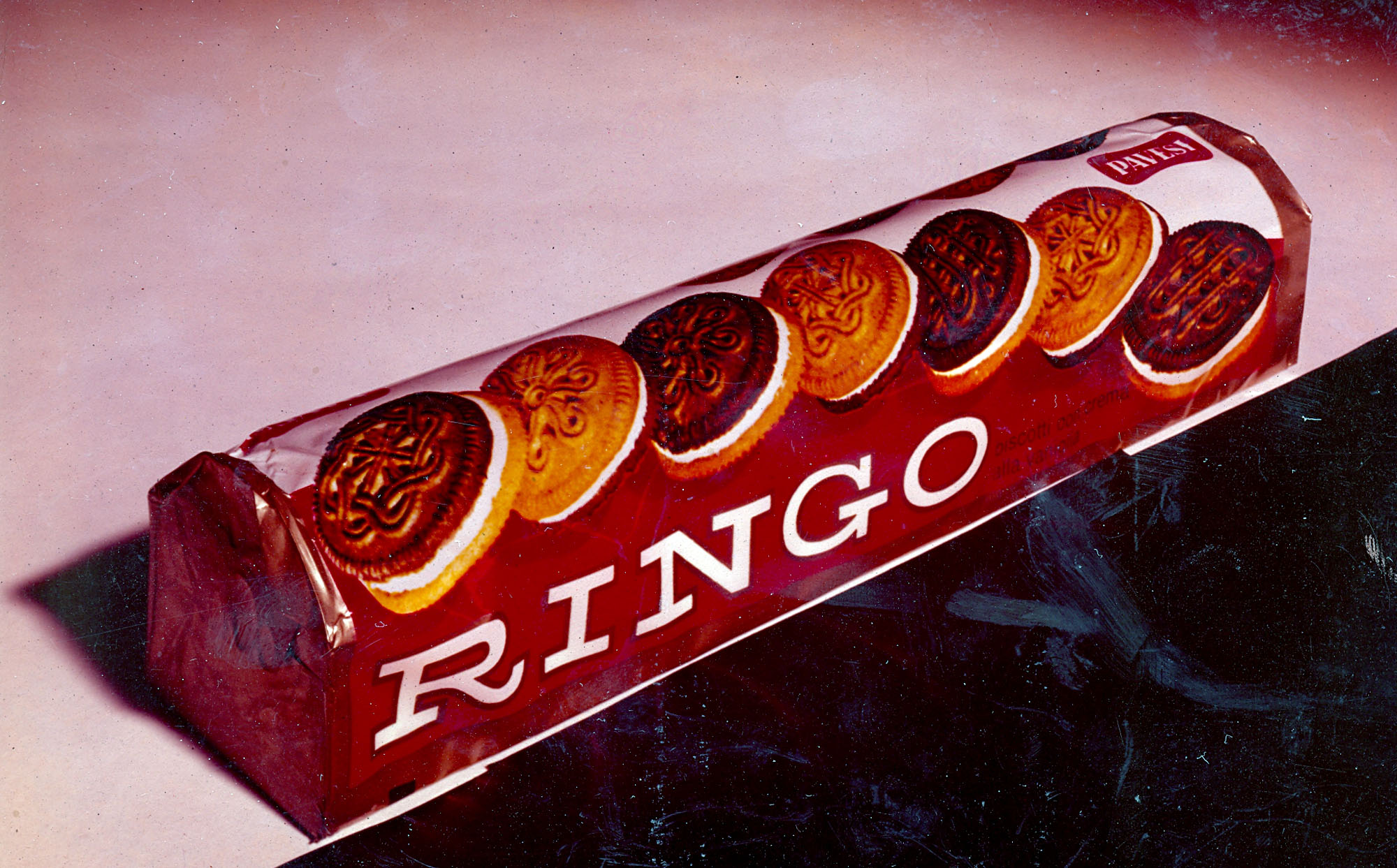

![04.05.01.03.04 Pubblicità Stampa Parola D'ordine Ringo!, 1969 Press advertising - Parola d'ordine_Ringo!, 1969 [Password_Ringo!, 1969]](https://www.archiviostoricobarilla.com/wp-content/uploads/2018/05/04.05.01.03.04-Pubblicità-stampa-Parola-dordine_-Ringo-1969.jpg)
![04.05.01.03.05 Pubblicità Stampa Dolce Ringo, 1973 Press advertising - Dolce Ringo, 1973 [Sweet Ringo, 1973]](https://www.archiviostoricobarilla.com/wp-content/uploads/2018/05/04.05.01.03.05-Pubblicità-stampa-Dolce-Ringo-1973-e1526372218843.jpg)
![04.05.01.03.06 Pubblicità Stampa Ringo, Una Crema Tra Due Biscotti, 1977 Press advertising - Ringo, una crema tra due biscotti, 1977 [Ringo, cream between two biscuits, 1977]](https://www.archiviostoricobarilla.com/wp-content/uploads/2018/05/04.05.01.03.06-Pubblicità-stampa-Ringo-una-crema-tra-due-biscotti-1977-e1526372272538.jpg)
![04.05.01.03.07 Pubblicità Stampa Tre Bontà Una Sull'altra,1978 Press advertising - Tre bontà una sull'altra, 1978 [Three pieces of goodness one above the other, 1978]](https://www.archiviostoricobarilla.com/wp-content/uploads/2018/05/04.05.01.03.07-Pubblicità-stampa-Tre-bontà-una-sullaltra1978-e1526372324917.jpg)
